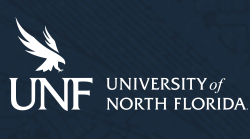ORCID
https://orcid.org/0009-0008-4769-2370
Year
2023
Season
Spring
Paper Type
Master's Thesis
College
College of Computing, Engineering & Construction
Degree Name
Master of Science in Computer and Information Sciences (MS)
Department
Computing
NACO controlled Corporate Body
University of North Florida. School of Computing
Committee Chairperson
Dr. Xudong Liu
Second Advisor
Dr. Indika Kahanda
Third Advisor
Dr. Robert Maxwell
Abstract
Breast density screenings are an accepted means to determine a patient's predisposed risk of breast cancer development. Although the direct correlation is not fully understood, breast cancer risk increases with higher levels of mammographic breast density. Radiologists visually assess a patient's breast density using mammogram images and assign a density score based on four breast density categories outlined by the Breast Imaging and Reporting Data Systems (BI-RADS). There have been efforts to develop automated tools that assist radiologists with increasing workloads and to help reduce the intra- and inter-rater variability between radiologists. In this thesis, I explored two deep-learning-based approaches on breast density classification. First, I developed and experimented with algorithms using deep learning models (such as Inception V3 and ViT) to classify patients according to BI-RADS using various types of digital mammograms. Second, with the need to provide not only such classification but also a quantitative measure of breast density to help standardize assessments across radiologists, I applied a deep learning based semantic segmentation model, DeepLabV3, to predict density percentages which then were used to provide a linear and probability scale.
Suggested Citation
Testagrose, Conrad Thomas, "Breast density classification using deep learning" (2023). UNF Graduate Theses and Dissertations. 1178.
https://digitalcommons.unf.edu/etd/1178
Included in
Artificial Intelligence and Robotics Commons, Data Science Commons, Other Biomedical Engineering and Bioengineering Commons

